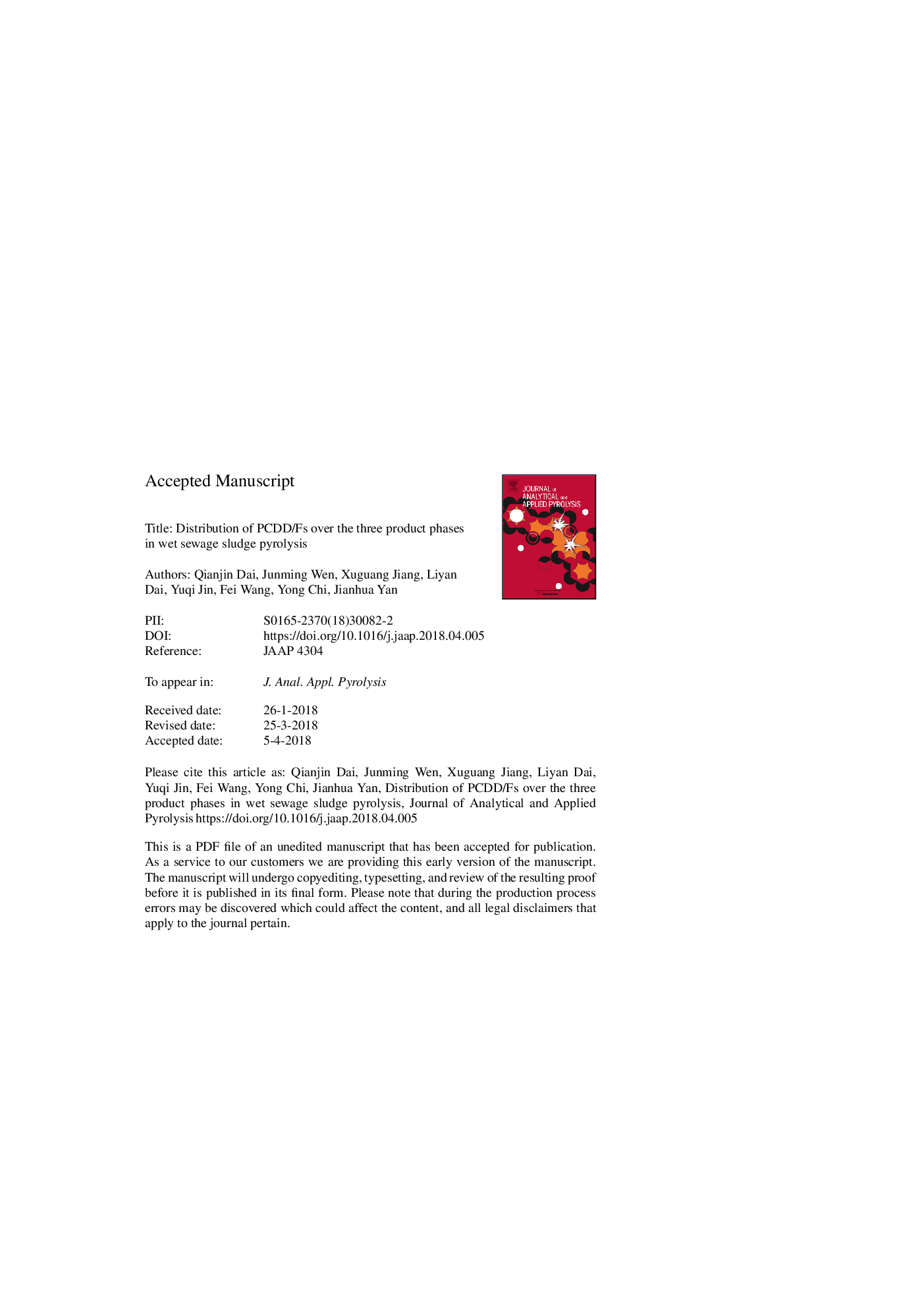| Article ID | Journal | Published Year | Pages | File Type |
|---|---|---|---|---|
| 7606270 | Journal of Analytical and Applied Pyrolysis | 2018 | 19 Pages |
Abstract
Pyrolysis of wet sewage sludge was conducted using (1) conventional pyrolysis (CP) by electric heating and (2) microwave pyrolysis (MP) by microwave heating separately to obtain the emission characteristics of polychlorinated dibenzo-p-dioxins and dibenzofurans (PCDD/Fs) during pyrolysis. Tests were conducted in parallel on two set-ups. The 4-8-chlorinated PCDD/Fs were determined by gas chromatography/mass spectroscopy (GC/MS) in each of the resulting product phases (gas, liquid and solid phase). During the evolution of PCDD/Fs mainly migration rather than formation of congeners was observed, while liquid phase were dominant for PCDD/Fs amount. Effects of distillation and dechlorination appeared in the yield of gas and liquid phase. Totally chlorinated congeners such as OCDD and OCDF were mostly dechlorinated to lower chlorinated congeners. PCDD/Fs in gas phase and liquid phase increased along with power increase for MP and peaked before 700â¯Â°C for CP, while the amount differed little for solid phase. It was indicated from CP that PCDD/Fs were decomposed at 800â¯Â°C for wet sewage sludge pyrolysis. PCDD/Fs distribution in the three resulting product phases can be well explained by the boiling point, wherein OCDF was always relatively more difficult to be distillated than other congeners. MP produced equivalent quantity of PCDD/Fs compared with CP, which indicated the absence of special effect (nonthermal effect) of microwave heating on PCDD/Fs evolution.
Keywords
Related Topics
Physical Sciences and Engineering
Chemistry
Analytical Chemistry
Authors
Qianjin Dai, Junming Wen, Xuguang Jiang, Liyan Dai, Yuqi Jin, Fei Wang, Yong Chi, Jianhua Yan,
